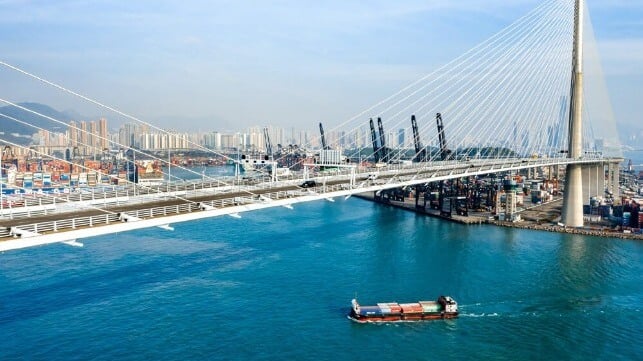Tech Enhancements Bring Smoother Sailing to International Commerce

The difficulties facing global trade and the global supply chains have been widely documented over the past few years. The outlook for global trade remains murky in 2025 with the threat of tariffs and ongoing shifts in geopolitics. Despite headwinds, the World Trade Organization is projecting world merchandise trade growth to increase three percent this year.
With growth in the market, however, comes an even greater influx of information. This is especially true for businesses engaged in maritime transport, as a projected oversupply of available shipping space will likely lead to more options for businesses to parse through. This increase in options comes at a time of increasingly complex supply chains, which only adds to the information that businesses must evaluate and can decrease the visibility businesses have into the process from start to finish. How businesses handle the influx of information that comes with more options can make all the difference between profit and loss, and visibility into the process is key to making informed decisions.
Digital Transformation of Maritime Finance
As globalization and international trade have expanded in recent decades, innovation has been a critical part of the process nearly every step of the way. Maritime trade in particular has evolved tremendously, from large wooden ships to steamer ships to the massive container ships we see on the waters today. Other innovations, such as the magnetic compass and the Panama Canal, have helped to simplify navigation and shipping routes along the way.
Today, maritime trade is experiencing a technological renaissance as businesses look for increased transparency and flexibility along with decreased costs. According to a report from PwC, the maritime software market is expected to reach $2.9 billion by 2028. While some innovations, such as autonomous ships, are still in the final stages of testing and early stages of use, other technologies are already changing the game. For example, e-documents are currently being used to save as much as $5.5 billion. Like many industries, artificial intelligence is also revolutionizing maritime trade through cost negotiations, negotiating purchasing terms, compliance checks, freight audits, and route optimization.
Similar to the physical processes of maritime trade, the financing aspect is always evolving. On the one hand tariffs and other fees associated with cross-border trade are always in flux. A recent development worth noting is the number of parties that can be involved in trade financing has increased. Initially, banks, importers, and exporters dominated maritime trade finance. Today, however, trade financing companies, insurers, and export credit agencies have entered the fold to increase options for businesses. The drawback to this development is that maritime trade financing has become somewhat fragmented, and many businesses do not have end-to-end transparency into the process.
For all the investment in navigational and tracking technology across the maritime trade landscape, there is also tremendous opportunity to deliver digital payments innovations to streamline the financial side of maritime trade and increase transparency—and banks are the perfect candidate to lead this charge.
Accelerate Trade: A New Way to Bank
One example of banking technology designed to help revolutionize maritime trade financing is AccelerateTM Trade, an advanced, automated, digital trade finance portal from Synovus Bank.
As global trade—and maritime trade in particular—became increasingly digitalized, Synovus recognized the need to digitalize the payments process to help bring the entire trade operation online. Accelerate Trade does just that by allowing banks to initiate and monitor transactions 24/7 without having to call the bank or submit paperwork. Through this product, businesses can maximize efficiency, optimize processing and reduce risk for commercial letters of credit (import and export), standby letters of credit, guarantees, bankers’ acceptances, documentary collections, financing, and more. Accelerate Trade users can also leverage features such as user-driven reporting, alerts and calendaring to track their trade financing process.
For maritime trade specifically, Accelerate Trade can be combined with another Synovus offering, AccelerateTM FX, to conduct foreign exchange and trade activities securely.
By bundling all of these services into one solution, Synovus offers businesses a high degree of visibility into their trade financing activities from start to finish. Accelerate Trade also helps businesses see the entire picture of their trade financing operation by consolidating key information for multiple transactions into one view. Access to all of this information gives business decision-makers the insights they need to improve operational efficiency and enter the new era of maritime trade.
In spite of economic and geopolitical headwinds, global trade, driven by maritime trade, appears poised to continue its steady growth. Automation and emerging technology have begun to revolutionize maritime trade operations throughout the process. Through products like Accelerate Trade, banks are making sure that the financing for these operations evolves to meet the needs of the modern market, too.
For more information or to schedule a demo of Accelerate Trade, please visit: https://www.synovus.com/corporate/accelerate-trade/
This article is sponsored by Synovus Bank. Jeffrey Beisler-Snell is Head of International Banking at Synovus Bank.
The opinions expressed herein are the author's and not necessarily those of The Maritime Executive.
